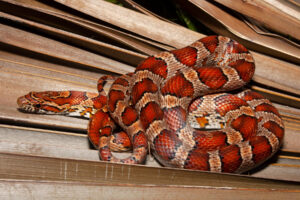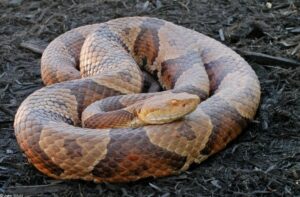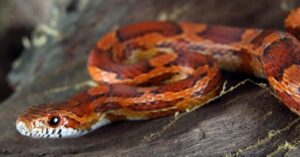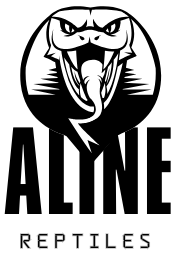Choosing the right snake as a pet can be an exciting yet daunting decision. Whether you’re drawn to the vibrant colors of a corn snake or the mystique of a venomous copperhead, each species offers unique experiences. But here’s the catch—there’s a world of difference between these two snakes, and understanding their temperament, care needs, and potential risks will help you decide which one is truly the ideal pet for you.
In this article, we’ll compare the corn snake vs copperhead across various factors to help you choose the best snake for your lifestyle. Let’s dive into the details of these two fascinating creatures and uncover which one is the perfect fit for you.
Understanding the Corn Snake: A Beginner’s Reptile Pet

What is a Corn Snake?
The corn snake (Pantherophis guttatus) is a non-venomous snake species native to the southeastern United States. Known for their docile nature and striking appearance, corn snakes are often the go-to choice for first-time reptile owners.
These snakes are typically recognized by their orange or reddish-brown bodies with black-bordered, lighter-colored blotches, giving them a vibrant yet soothing appearance. Corn snakes grow to an average size of 3 to 5 feet and have a lifespan of around 15 to 20 years, making them a long-term commitment but one that’s manageable for a beginner.
Why Corn Snakes are Perfect for Beginners
Corn snakes are often recommended for first-time snake owners due to their docile temperament, ease of care, and relatively low risk. Unlike some other snake species, corn snakes are known to be friendly and calm, which makes them ideal for families or individuals who want a pet that is easy to handle. These snakes are generally very tolerant of being handled and can form a bond with their owners over time.
Moreover, their non-venomous nature ensures that there’s no major risk for injury, making them perfect for new pet owners who might be intimidated by the thought of handling a venomous snake. They’re not only safe but also engaging as pets, as they enjoy exploring their environment, making them more interactive than many other reptiles.
Corn Snake Care Requirements
Caring for a corn snake is relatively straightforward compared to more exotic reptiles. For a proper habitat, you’ll need a secure enclosure (preferably a glass tank) with a minimum of a 20-gallon capacity.
The temperature inside the tank should range between 75-85°F during the day, with a slight drop at night. Proper humidity levels are also important, typically around 40-60%, which can be easily maintained by misting or using a humidity gauge.
Corn snakes are opportunistic feeders and usually eat small rodents like mice or rats. A good rule of thumb is to feed them every 5-7 days, depending on their age and size.
Handling is also a key component of their care—though it’s best to give them a few days to settle into their new environment before interacting with them, you can gently handle your corn snake as it grows accustomed to you.
It’s important to handle them regularly to keep them comfortable with human interaction, but always avoid over-handling, as too much stress can be harmful to them.
Ideal Customer Profile for Corn Snakes
Corn snakes are ideal for pet owners who are looking for a low-maintenance, safe, and interactive reptile. This species appeals to:
- Beginners: First-time snake owners or those new to reptiles.
- Families with children: Since corn snakes are non-venomous and friendly, they are a great choice for families with children interested in reptile care.
- Busy individuals: Those looking for a pet that doesn’t require excessive time or energy but still offers companionship and entertainment.
- Reptile enthusiasts: People looking to start their collection of pet reptiles with a hardy, easy-to-care-for snake.
The Copperhead: A Venomous but Fascinating Choice for Experts

What is a Copperhead?
The copperhead (Agkistrodon contortrix) is a venomous pit viper native to the central and eastern United States. Known for its distinctive coloration—a blend of coppery-orange hues and darker brown bands—copperheads are often admired for their beautiful, yet dangerous appearance.
These snakes typically grow to 2-3 feet in length and live for 12-20 years. Unlike the corn snake, copperheads possess venom, which is used for subduing prey and self-defense.
Why Copperheads Appeal to Experienced Enthusiasts
Copperheads are far more challenging to keep than corn snakes, making them more suitable for experienced herpetologists or reptile enthusiasts who are well-versed in venomous snake care.
These snakes are not typically recommended for novice pet owners, as they pose a risk of injury due to their venomous bite and unpredictable temperament. However, for those who are prepared for the responsibility, copperheads offer a unique and rewarding experience.
Many herpetologists and reptile collectors are drawn to copperheads for their rarity and the challenge they present. These snakes can be fascinating to observe, especially for enthusiasts interested in studying venomous reptiles. Additionally, their unique defensive behavior and striking appearance make them an exciting addition to any experienced reptile collection.
Copperhead Care Requirements
Copperheads require specialized care, particularly when it comes to habitat and safety. Since they are venomous, handling should be kept to a minimum and done only by individuals who are highly experienced with venomous species. Their enclosures must be secure and escape-proof, with appropriate heating, humidity, and enrichment for both mental and physical stimulation.
A copperhead’s tank should be kept between 75-85°F with a humidity level of around 60%. This species thrives in more naturalistic settings, so providing them with rocks, logs, and hiding spaces will make them feel more comfortable.
Their diet mainly consists of small rodents, but you must be very cautious about feeding and handling them, as they are more prone to aggression than corn snakes. Copperheads can be territorial and will not hesitate to strike when threatened.
Ideal Customer Profile for Copperheads
Copperheads are suited to individuals who:
- Have experience with venomous reptiles: Only experienced snake keepers or wildlife professionals should consider owning a copperhead.
- Understand the risks: Pet owners who are comfortable handling a venomous snake and are prepared for the safety risks involved.
- Are dedicated to reptile conservation: Enthusiasts involved in conservation efforts or studying venomous species might be particularly drawn to this challenging species.
- Have secure and controlled environments: Copperheads require specialized enclosures and handling, which means they are not for casual pet owners but those who can provide secure, controlled habitats.
Corn Snake vs Copperhead: Key Differences and Choosing the Right Pet

Temperament & Safety
When comparing the two snakes, one of the most significant differences is temperament. Corn snakes are known for being docile and easygoing, which makes them perfect for first-time owners or families. They’re less likely to bite and are generally calm during handling. In contrast, copperheads are defensive and more likely to strike if they feel threatened.
Their venomous bite can cause serious injury, which means they require extra caution and experience when handled. Therefore, safety is a key factor to consider when choosing between these two species.
Ease of Care
Corn snakes are much easier to care for compared to copperheads. Their housing needs are relatively simple—just a secure tank with proper heating and humidity. They are also easy to feed, typically requiring mice every week or so.
Copperheads, on the other hand, need secure enclosures, specialized handling equipment, and a much more advanced understanding of venomous snake care. Their aggressive nature and venomous bite make them more difficult to manage and require a more experienced owner.
Legal Considerations
Another important factor to consider is the legality of owning these snakes in your area. Corn snakes are legal in most states, making them accessible to a wider audience. Copperheads, however, are subject to legal restrictions in many places due to their venomous nature.
Depending on your location, you may need special permits or licenses to own one, and in some areas, it may be outright illegal to keep them as pets. Always check local laws and regulations before deciding to own a venomous snake.
Cost and Commitment
Corn snakes are generally more affordable than copperheads. Their care and maintenance costs are also lower, which makes them a more budget-friendly option for those looking for a reptile companion.
Copperheads, however, require specialized care and safety measures, which can make them more expensive to maintain. From acquiring the proper enclosure to purchasing safety equipment for handling, the cost of owning a copperhead can add up quickly.
Is a Corn Snake or Copperhead Right for You?
Assessing Your Experience Level
If you’re new to reptiles, a corn snake is undoubtedly the best choice. They’re low-maintenance, friendly, and require less specialized knowledge to care for. However, if you’re an experienced reptile keeper and enjoy challenges, a copperhead could be an exciting, albeit risky, addition to your collection.
Lifestyle Fit
Consider your daily routine and whether you have the time and space to care for a snake. Corn snakes are perfect for those with busy schedules since they don’t require constant attention, while copperheads demand more time, focus, and care due to their venomous nature.
Risk and Responsibility
Finally, owning a venomous snake like the copperhead comes with considerable responsibility. Copperheads are not for the faint of heart, and their venomous bite can be dangerous. If you’re looking for a pet that offers less risk, a corn snake will be your safer bet.
Key Differences at a Glance
| Feature | Corn Snake | Copperhead |
|---|---|---|
| Venomous | No | Yes |
| Size | 3 to 6 feet | 2 to 3 feet |
| Body Shape | Slender | Stout |
| Color Pattern | Orange/red with black-bordered markings | Tan/brown with hourglass bands |
| Head Color | Same color as body (not copper-colored) | Copper-colored head |
| Behavior | Shy, non-aggressive | Shy but can strike when threatened |
Conclusion
In the end, the choice between a corn snake vs copperhead depends largely on your experience level, willingness to accept risk, and the type of pet you’re looking for. Corn snakes are the ideal pet for beginners or families seeking a low-maintenance, safe, and friendly reptile. Copperheads, on the other hand, are for experienced enthusiasts who are ready to face the challenges and risks associated with venomous snakes.
Whether you choose a corn snake or a copperhead, remember that both species require commitment, responsibility, and proper care. If you’re ready to take on the responsibility of a snake, either one of these fascinating creatures will make a unique and intriguing addition to your home.

